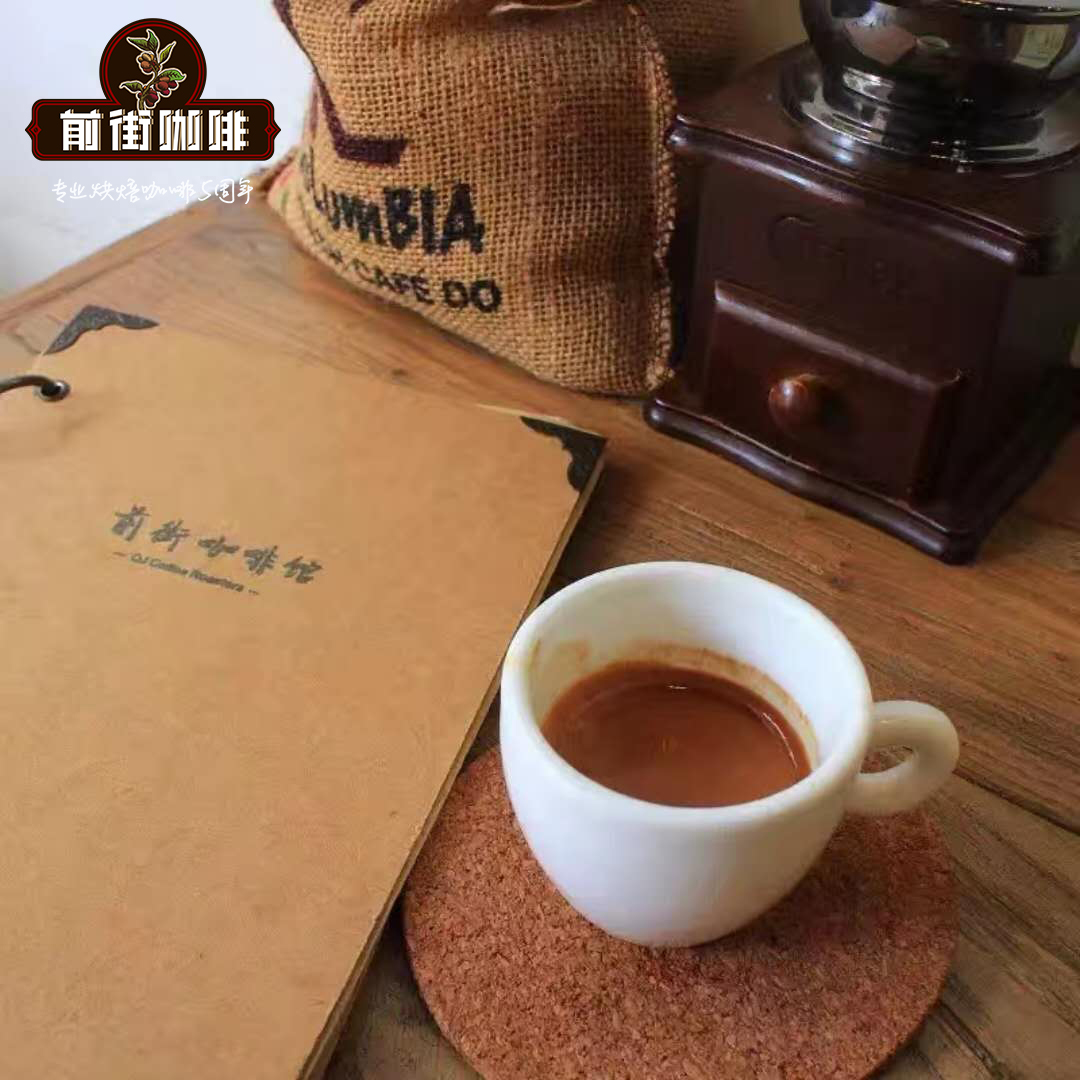How to use professional coffee machine to make espresso Espresso correctly?

Professional coffee knowledge exchange more coffee bean information please follow the coffee workshop (Wechat official account cafe_style)
How to correctly use a professional coffee machine to make espresso HOW TO MAKE PROPER COFFEE BAR espresso in espresso--
Have you ever noticed how baristas or waiters make coffee when you go to the coffee shop to order coffee? Gambero Rosso will tell you how a professional Barista should use a coffee machine to make Espresso. The next time you go to a coffee shop and order Espresso, check to see if the waiter has made it for you correctly. If not, try another one.
1. Clean
Before brewing coffee, you must make sure that the coffee machine is clean so that the coffee product can enjoy its most authentic taste. First, a professional barista will install the filter handle (Portafilter), open the sink and clean the filter residue and equipment parts left by the previous cup of coffee. Before making each cup of Espresso, this step can not be omitted.
two。 Clean filter handle
Next, the barista will use a professional brush and cloth to clean the filter handle. It is wrong to say that the coffee grounds of the previous cup will bring more flavor to the next cup of coffee. The coffee grounds of the previous cup will only give the next cup of coffee a charred taste.
3. Grinding
Coffee beans must be ground, because 65% of their aroma will be lost 15 minutes after grinding. Nowadays, many coffee shops grind the coffee beans in advance and then measure the amount of coffee when making coffee, which will greatly lose the freshness, taste and aroma of the coffee. In addition, the containers for storing coffee beans must be transparent and clean. the coffee bean cans in many coffee shops are yellow. The main reason for the yellow is that the oil in the coffee beans oxidizes over time, and it will spoil and change the taste of the coffee beans.
4. Compress
After grinding the coffee beans, the coffee powder must be compacted with a manual filler. Many baristas rely on the built-in standard fillers that come with the bean grinder, but these built-in fillers don't actually ensure the density of the coffee powder.
5. Clean the filter handle again
Clean the filter handle again to remove coffee powder from the edges. If this step is omitted, the extra coffee powder on the edge will be scorched during coffee extraction, affecting the taste of the entire cup of coffee; in addition, it may also cause damage to the machine's rubber gasket.
6. Clean the outlet nozzle
After cleaning the filter handle, the barista will wipe the outlet. The outlet must be cleaned before the coffee is extracted.
7. Extraction
The barista finally installed the filter handle, and according to the standard of the Scae European Fine Coffee Association, the coffee extraction time is about 20 Murray 30 seconds.
CAFFE' MACCHIATO
The so-called Caff è Macchiato (known as macchiato coffee in Taiwan) is to add a small amount of milk foam to the Espresso. The mixing spoon used to dispense the foam must be wiped clean with a cloth after each use, and the remaining boiled milk in the pot must be poured out, and fresh milk must be used to dispense the foam. The boiled milk will not form a perfect foam and may be scorched after being boiled again.
CAFFE' LUNGO
Caff è Lungo is a diluted Espresso. When making Caff è Lungo, a professional barista or waiter will dilute the coffee with hot water instead of prolonging the extraction time. Coffee extraction time, which varies according to the variety of coffee beans, temperature and roasting freshness, is the key to a good cup of Espresso. The change of extraction time will affect the presentation of coffee flavor.
Weight, time and temperature
Generally speaking, 7 grams of ground coffee powder is used to make a classic Espresso in Italy, but the amount may vary depending on the roasting degree and freshness of the coffee beans. As for the extraction time, as mentioned earlier, according to the standard of Scae European Fine Coffee Association, it is between 20 and 30 seconds, but the extraction time for a cup of classic Italian Espresso is usually 25 seconds. The time of contact between water and coffee powder will affect the presentation of coffee flavor, usually the longer the extraction time, the more water-soluble substances will enter the coffee, so the balance of a cup of Espresso is very important.
What is a good Espresso?
A good Espresso must have a good balance, of course, the balance of each cup of coffee will be more or less different, some may be sour, some may be sweet, but should not be particularly prominent. In addition, Italian baristas have a different view from other countries about the dream foam on the surface of Espresso: Italian baristas like Espresso covered with solid foam, while baristas outside Italy put more emphasis on the taste of coffee itself.
Important Notice :
前街咖啡 FrontStreet Coffee has moved to new addredd:
FrontStreet Coffee Address: 315,Donghua East Road,GuangZhou
Tel:020 38364473
- Prev

How to drink instant coffee powder? No, I haven't been drinking instant for years!
Professional coffee knowledge exchange more coffee bean information Please follow the coffee workshop (Wechat official account cafe_style) I came into contact with instant coffee, I worked later when I was in college, and spent more time making coffee shops and drinking freshly ground coffee. I haven't been in contact with instant coffee for a long time. Now when I come into contact with boutique coffee, I have begun to drink boutique coffee, let alone instant coffee.
- Next

What is Espresso? Characteristics of Espresso coffee beans? What kind of equipment can be concentrated in Italian style?
Professional coffee knowledge exchange more coffee bean information please follow the coffee shop (Wechat official account cafe_style) Espresso usually see on the road in the coffee shop latte, Italian concentrate, cappuccino is almost all made from the Espresso mechanism, Italian beans are made from different coffee beans mixed with beans, so the Italian taste of each company is more or less different, coffee
Related
- Beginners will see the "Coffee pull flower" guide!
- What is the difference between ice blog purified milk and ordinary milk coffee?
- Why is the Philippines the largest producer of crops in Liberia?
- For coffee extraction, should the fine powder be retained?
- How does extracted espresso fill pressed powder? How much strength does it take to press the powder?
- How to make jasmine cold extract coffee? Is the jasmine + latte good?
- Will this little toy really make the coffee taste better? How does Lily Drip affect coffee extraction?
- Will the action of slapping the filter cup also affect coffee extraction?
- What's the difference between powder-to-water ratio and powder-to-liquid ratio?
- What is the Ethiopian local species? What does it have to do with Heirloom native species?

